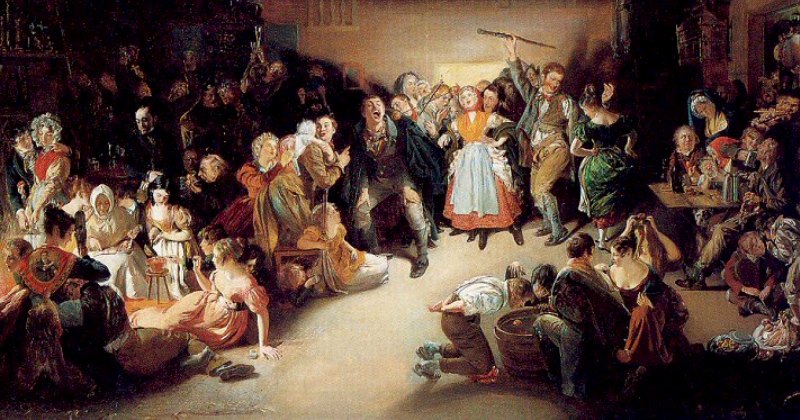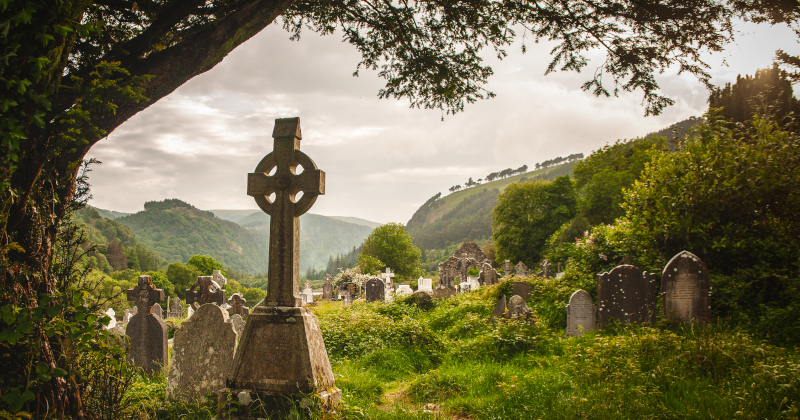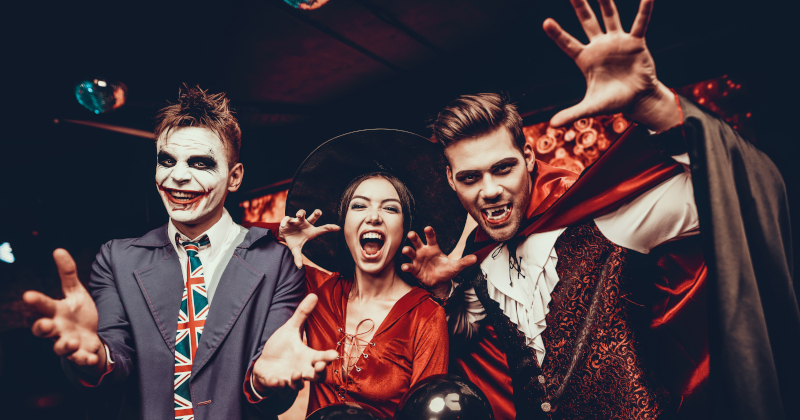
Halloween History – How Did the Wild Celts Invent it?
A time for spooky stories, dressing up as a frightening character, or maybe watching a horror movie with your favourite candy is more your style? But did you know we wouldn’t have Halloween as we know it today without the wild celts? It's true. The celts are the ones we should thank for bringing us this end of October celebration, but before we’re too hasty with the praise, lets dive into how the festivities started and what differences we have today.
Coming up in the article:
What is a Celtic Halloween?
Starting as an ancient Celtic spiritual tradition, ‘Halloween’, or commonly referred to as ‘Samhain’ (pronounced SAH-win), was celebrated over the period 31st October until November 2nd. It's during this time that the belief of the underworld and real-world barriers were blurred into one and that spirits and humans were allowed to interact. It’s for this reason that the Celts used to dress up, as they believed this would ward off unwanted ghosts. So, some traditions have crept into our modern Halloween celebrations!
Situated at the halfway point between the autumn equinox and the winter solstice, the festival on Samhain was believed to be one of the most important as it marked the end of summer and harvest, while welcoming in the darker months.
Brief History to Halloween for the Celts
Halloween is now a popular festival celebrated across the world, with children dressing up in exchange for candy, but let's break down from the Celts' point of view.
Christians Convert the Celtic Festival
Bonfires, sacrifices, demons, nudity and booze: Celtic festivals were wild, and Christian missionaries wanted to wipe them out.
But this wasn’t an easy task.
You couldn’t walk into a village, burn everything the people loved, and cancel everyone's favourite party: because this would cause a riot and convert nobody.

So, the missionaries were clever about it.
Way back in 600 A.D., Pope Gregory told missionaries to work with the traditions and customs rather than destroy them.
If a group of people worshipped a field, missionaries should make it a place of Christian worship. If the Celts had a celebration, the Christians should move their celebration to that day. In a sense, their strategy was to merge the religions together and crash every Pagan party.

And this strategy worked. Christmas Day and Easter moved to the same dates as Pagan festivals. And even the Vatican in Italy was once a Pagan site of worship. Everything from worshipped trees to burial sites became Christianised.
The Festival of the Dead
Yet there was one festival they struggled to convert. It was the biggest festival of the year and obscenely heathen. It was Samhain, the festival of the dead.
Celts believed Samhain was the day the underworld collided with the world of the living. It was when the season of sunshine became the season of scarcity. It was both an end and beginning to life’s eternal circle.
The Celts would party long into the night with huge bonfires. They left food for the deceased outside their houses. They slaughtered animals, bobbed for apples and dressed up as demons.

Missionaries told the Celts this ‘underworld’ they celebrated was hell. They said the spirits were evil and said they were worshipping the devil.
History tells us none of the Celts cared.
So, the Christians moved All Saints’ Day (or All Hallow’s Eve) to the same time, November 1st. This was the traditional day when Christians feasted and celebrated their dead saints. In a sense, it was the Christian festival of the dead.
But this abstract festival didn’t capture the Celts’ interest. The Celts still believed all the dead roamed the streets at this time of the year, and still wanted to dress up as demons.
The Christians then decided to make it bigger and moved another festival of the dead, All Souls Day, to 2nd November. Again, this didn’t change much. All it did was add Christian devils and beasts to the things people would dress up as.
The Modern Celebration
There was little else the Christians could do. It seemed humans just love being ghoulish. All the Christian efforts did was stop people sacrificing animals and changed the name from Samhain to All Hallow’s Eve, and eventually, Halloween.

So, next time you dress up for Halloween, remember it as one of the oldest Celtic and pagan events in the world. When your kids dress up as evil spirits they are re-enacting the day the spirits come to visit and mingle with the living.
Celebrate Samhain in Scotland This Year
You can enjoy a traditional Samhain festival in Edinburgh on 31st October 2024, at Holyrood Park with times still to be confirmed. At this festival of fire, see a live parade and help welcome in the Celtic New Year in style. If this is your first time, wrap up warm and enjoy the show, it’s truly spectacular thanks to live performers and immersive theatre features. And if you decide to make a special trip to Edinburgh for the festival, why not make it a short break and join us on tour? We’d be happy to continue the Halloween festivities and help you to unearth some more of Scotland's most haunted sites to see.
Roaming the Haunted Lands with Rabbie’s
With the history of Halloween and how the Celts brought it to life safely locked away in your brains, immerse yourself with what the real world can offer you. We can’t promise that a ghost story or two won’t be shared, but what’s a small-group tour at Halloween time without an air of mystery? Our driver-guides will be there to lead the way around some of the UK’s most haunted cities, should you be brave enough to come onboard. To get you inspired, be sure to sign-up to our newsletter where you’ll be one of the first to know about our new departure cities and tour dates.






